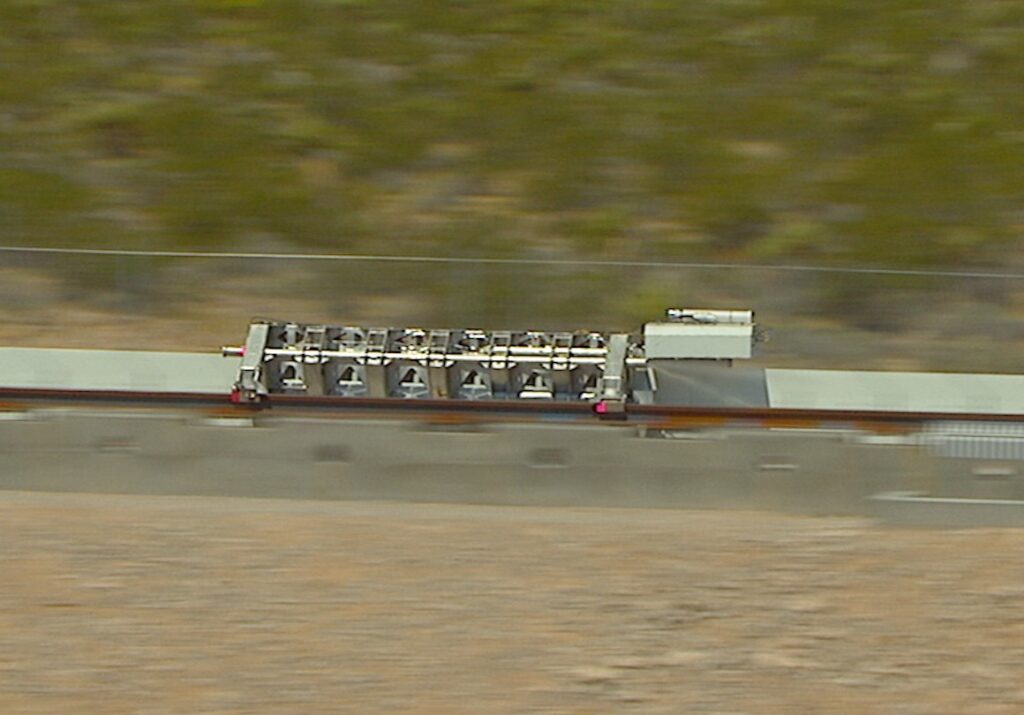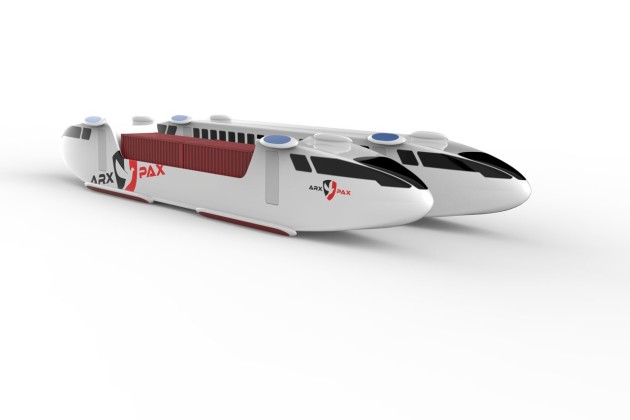The company that brought you a real-life hoverboard from “Back in the Future” wants to levitate you in the Hyperloop as well.
Arx Pax, the Silicon Valley company behind the Hendo Hoverboard, says it’s marketing its patented “Hover Engine” to commercial ventures that are trying to turn SpaceX founder Elon Musk’s rapid transit concept into a reality.
The company’s Magnetic Field Architecture technology also will be in the spotlight at the end of this month during the Hyperloop Competition Design Weekend at Texas A&M University. The event is one of the milestones on the way to this year’s Hyperloop pod races, which will be conducted on a 1-mile test track built next to SpaceX’s headquarters in Hawthorne, Calif.
Arx Pax says it’s received inquiries from more than half of the 126 teams taking part in the competition about its Hyperloop Developer Kit, or HDK, and has already made some sales. The kit goes for $1,289.
David Coven, one of the leaders of the University of Washington’s Hyperloop team, says he and his student teammates are developing their own maglev system. “We decided not to use Arx Pax,” he told GeekWire. “It’s a little expensive.”
The system may be pricey for some of the student teams, but it could make sense for commercial ventures such as Hyperloop Transportation Technologies (HTT) and Hyperloop Technologies Inc. (HTI).
Arx Pax’s co-founder and CEO, Greg Henderson, said in a statement that “it’s an exciting time to be innovating in the transportation arena.”

“Like the Internet moves information today, we envision our Hover Engine systems to move physical objects in the same kind of fluid networks,” he said. “While there are other ways to hover, nothing else can do what our systems can.”
Arx Pax says the Hover Engine can provide propulsion, braking and guidance as well as levitation. It can also be adapted to share infrastructure with other travel modes.
Musk came up with the Hyperloop concept in 2013 as a means of getting from the Bay Area to Los Angeles in about 30 minutes. The design calls for the construction of tube networks through which passenger and cargo pods would zoom at near-supersonic speeds. The cost estimates for building the full Bay-to-L.A. system run around $6 billion or more.
Musk put out the concept on an open-source basis, but says he currently has no plans to commercialize the idea himself. That leaves the other commercial ventures free to move forward with their prototypes.
Today, Hyperloop Transportation Technologies provided further details about its plan to build a 5-mile track in Quay Valley, Calif.
“We are announcing the filing of the first building permit to Kings County to the building of the first full-scale Hyperloop, not a test track,” Bibop Gresta, HTT’s chief operating officer, told CNBC. “In 36 months we will have the first passenger in the first full-scale hyperloop.”
Construction is expected to begin by the middle of this year. “Everyone traveling on California’s I-5 in 2016 will be able to see our activities from the freeway,” CEO Dirk Ahlborn said in a news release.
Hyperloop Technologies Inc., meanwhile, is working on a half-mile, (1-kilometer) open-air test track in North Las Vegas, and aiming to have a 2-mile (3-kilometer) full-scale, full-speed prototype track ready by early 2017.
